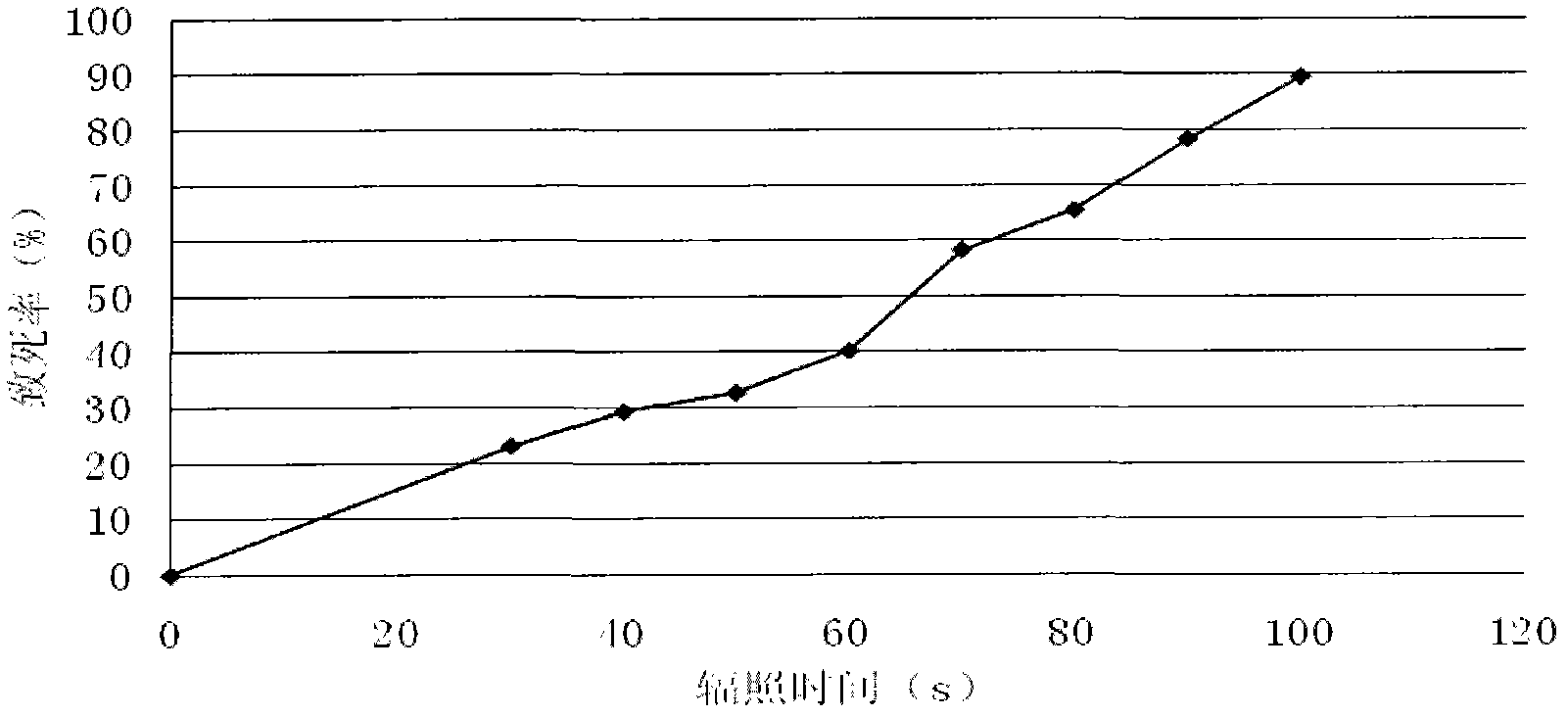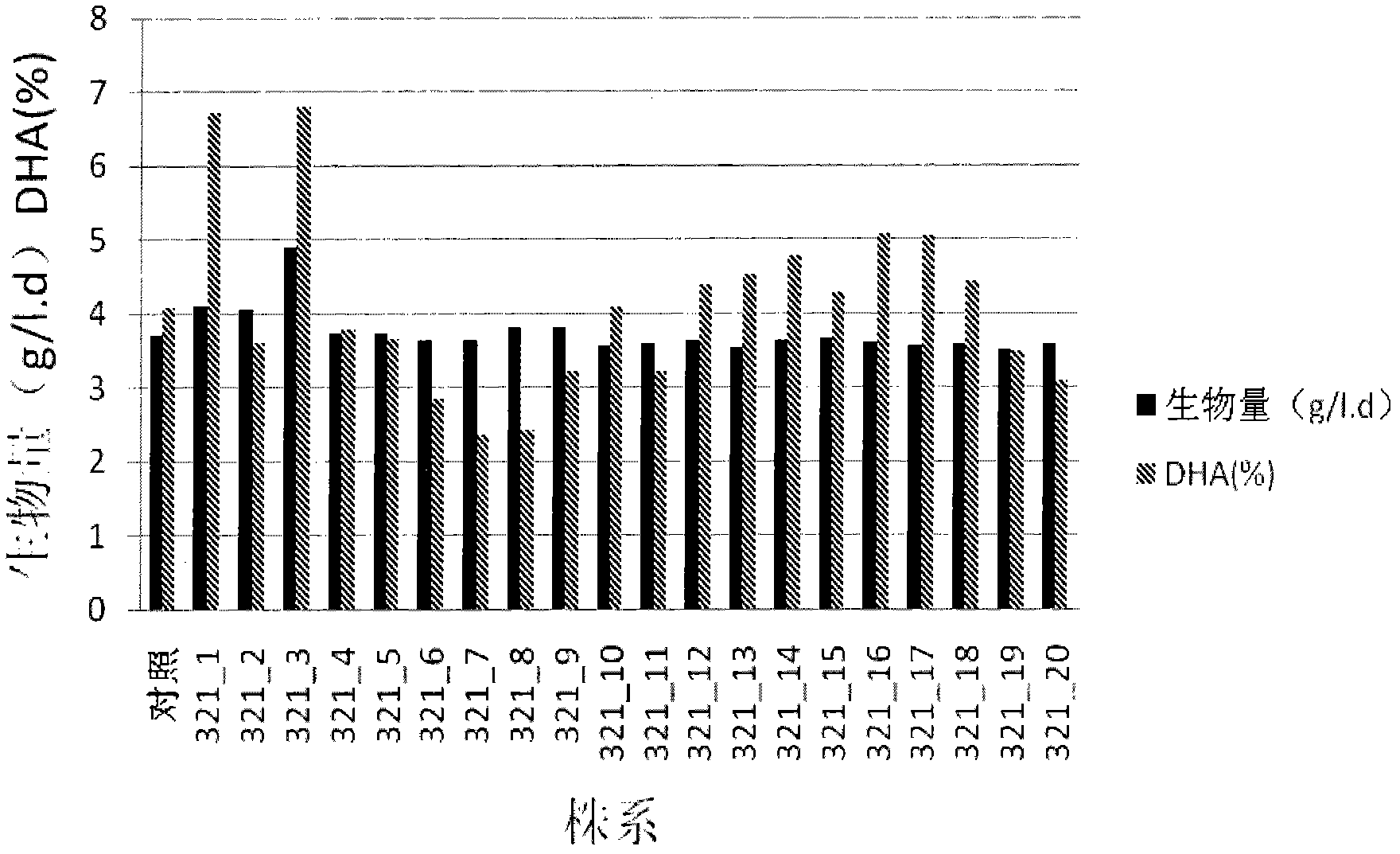Fragmentation chytrid mutagenesis method and variant produced by fragmentation chytrid mutagenesis method
A technology of Schizochytrium and mutant strains, which is applied in the field of microbial genetic breeding technology and fermentation biology, and can solve the problems of unclear whether there is quizalofop-resistant Schizochytrium and low EPA content
- Summary
- Abstract
- Description
- Claims
- Application Information
AI Technical Summary
Problems solved by technology
Method used
Image
Examples
Embodiment 1
[0056] Example 1 Mutation effect of ultraviolet rays on Schizochytrium
[0057] Spread Schizochytrium SR21 on a petri dish and place it under ultraviolet light for irradiation. The irradiation time is divided into 0 seconds (S) (control group), 30S, 40S, 50S, 60S, 70S, 80S, 90S and 100S (experimental group). Place it in the dark for 24 hours after irradiation, and count the number of colonies when they appear. The number of colonies in the control group was 100%, and the lethality of each experimental group was calculated ( figure 1 ). From figure 1It can be seen that with the extension of ultraviolet irradiation time, the lethality of Schizochytrium increased, showing a significant dose effect. The irradiation time of 70S-90S is selected (the lethality rate of Schizochytrium is 60%-80%), and effective mutagenesis treatment can be carried out on Schizochytrium.
[0058] The media used were:
[0059] Glucose 55g / L
[0060] Yeast extract 10g / L
[0061] Sodium glutamate 5...
Embodiment 2
[0067] Example 2 The screening of quizalofop to Schizochytrium
[0068] Add the inhibitor quizalofop (Quizalofop ethyl) {(R)-2-[4-(6-chloro-2-quinoxaline) of fat synthesis key enzyme (acetyl-CoA carboxylase) in the Schizochytrium culture medium phenoxy)-phenoxy]-acrylate}, the added concentrations were 0 μmol / L, 10 μmol / L, 30 μmol / L, 50 μmol / L, 70 μmol / L, 80 μmol / L and 90 μmol / L. With the number of colonies in the control group (0 μmol / L) as 100%, count the number of colonies in each group to calculate the lethal rate ( figure 2 ). From figure 2 It can be seen that within the experimental range, the lethality of Schizochytrium was positively correlated with the concentration of quizalofop. The concentration of quizalofop was 50μmol / L to 80μmol / L for selection of resistant strains.
[0069] For the convenience of operation, quizalofop was added to the culture medium, and Schizochytrium was coated for further directional screening of ultraviolet resistant strains.
[0070...
Embodiment 3
[0081] Embodiment 3 Differences in growth rate and DHA content of control strains and different mutant strains
[0082] After screening and confirmation in Example 2, more than 200 strains with quizalofop-resistant were selected. Then, the selected quizalofop-resistant strains were further screened by using the growth rate and DHA content of the strains as indicators. 20-50 strains were selected in the first re-screening, and 3 strains were selected in the second re-screening. The growth rate and DHA content of the three strains were all higher than the control by more than 10%.
[0083] The conditions for its cultivation are
[0084] a. The medium formula is (g / L):
[0085] Glucose 60g / L
[0086] Yeast extract 15g / L
[0087] Sodium glutamate 4g / L
[0089] Magnesium sulfate 5g / L
[0090] Ammonium sulfate 5g / L.
[0091] b. Culture temperature: 22-27°C.
[0092] c. Initial pH: 5.0-7.0.
[0093] image 3 Represents the biomass and DHA cont...
PUM
 Login to View More
Login to View More Abstract
Description
Claims
Application Information
 Login to View More
Login to View More - R&D
- Intellectual Property
- Life Sciences
- Materials
- Tech Scout
- Unparalleled Data Quality
- Higher Quality Content
- 60% Fewer Hallucinations
Browse by: Latest US Patents, China's latest patents, Technical Efficacy Thesaurus, Application Domain, Technology Topic, Popular Technical Reports.
© 2025 PatSnap. All rights reserved.Legal|Privacy policy|Modern Slavery Act Transparency Statement|Sitemap|About US| Contact US: help@patsnap.com



